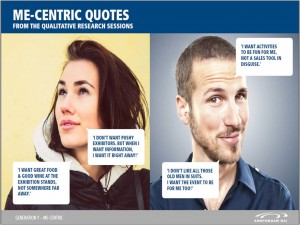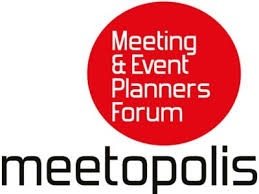JT Anderson ContactFollow this author
Creative Posted on October 01, 2012 inShare.864 PrintShareCommentAs I write this, I am looking at a poster. Every year, an industry publication releases a digital issue that contains some great posters and infographics that I often find useful and put up on the wall of my office for reference. One from 2011 had an ad on the bottom of it that read, “Creativity Meet Ubiquity.” The ad seemed to infer that you can achieve that advertising omnipresence known as “ubiquity” simply by blasting your ad across all digital platforms — as if ubiquity was some great Holy Grail that we advertising professionals (especially creatives) have been looking for our entire careers.
As the executive creative director of a digitally focused agency, my challenge is to come up with new and persuasive ideas specific to the online medium. I find myself staring at this poster on my wall, often late at night, while trying to devise an execution that will break through the clutter. What I need is something relevant, something useful, something entertaining and unique, something that will make a difference for my clients, something — creative.
Connect with the industry. Want to meet the companies that are driving the future of digital marketing? Attend the iMedia Breakthrough Summit, Oct. 14-17. Request your invitation today. Honestly, I am never really going for ubiquity.
Ubiquity has had many names: the “breakthrough,” the “Big Idea,” “Media Agnostic.” It has been associated with the notion that if we repeat a message or experience across all platforms, it will have a greater effect. In fact, ubiquity is something that just feels right. It feels so right that it can’t be wrong — right? And yet, we’ve witnessed countless cookie cutter executions over the years that pander to the lowest common denominator of what “the idea” is. On this road paved with good intentions, many mistakes are made. Here are three of the biggest:
Defining an idea too narrowly
Campaign ideas are concepts, sometimes great ones. They are themes that evoke thoughts and feelings and connect the person experiencing them to the heart of the message. You see execution after execution of a great campaign across numerous media and can just feel how they are all connected. Perhaps they share an actor or model, a visual style, or a few words of copy, and this provides a through-line that ties the executions together. But do they really have to share any of these things in order to convey the same idea?
This is a slippery slope. If using the same actor again and again was all it took to create a memorable and moving campaign, then TV spots could just be print ads that advertisers showed for 30 or 60 seconds. Great TV spots start with an understanding of the inherent power that this particular medium has to offer and what people want when they’re engaging with it. So too should campaigns that run online. Start your brainstorming with these questions: What is the core theme of your idea, and how is it best represented in each of the unique media you plan to include in your campaign? What is your audience doing with those media, and what does it want from them? Showing an ad made for TV to an online audience isn’t necessarily wrong. But it also isn’t necessarily right.
Believing that people want ubiquity
We don’t go to an Italian restaurant when we’re hungry for a burrito, nor should we expect consumers to embrace campaigns that aren’t specific to their media environment. While it’s true that with enough money, frequency, and repetition a marketer can make just about any execution memorable, most clients don’t have that luxury, and bombastic campaigns that win buzz and awards don’t always serve the needs of the client. I try to judge my team’s digital executions by asking if they are media-smart, media-simple, and media-specific. You might not make the biggest splash in the pond by following this rule, but you will catch the right fish. Digital and interactive are not one channel, but rather a collection of platforms and experiences that appeal not only to different people, but also to different states of mind. Not only do you have to ask who your audience is, but also what your customers are looking for when you connect with them.
Falling in love
Keep in mind that your “media-specific execution” is not a “media-agnostic idea.” Sometimes in this job you feel so great about the ad you’ve just helped create that you want to share it with the whole wide world, but you have to be careful not to love it to the detriment of your overall campaign.
During the Olympics, many of us were captivated by Nike’s “Jogger” ad — part of its “Find Your Greatness” campaign. Some experienced it for the first time on TV, while others saw it when a friend or loved one was inspired to share it through social media. Either way, this was positive exposure, because Nike’s message spanned all media: Find your own greatness. But Nike wasn’t blinded by its love of what is undoubtedly a great advertising message. If viewers were curious enough to continue to Nike.com after watching the ad, they were fed a set of challenges that unfold over time, inviting them to find their own greatness. Consumers were given an introduction to the range of Nike Plus products that might help them attain their own personal best. Online, it was those interactive challenges that made the campaign great — challenges that were presented in a way that was unique to the digital medium. Nike not only continued the journey, but it also led customers further down the buying path with an interactive experience that was its own node in the interconnected message.
We’ve all been down this path with other brands. We’ve all seen a TV spot and gone online, only to find the very same original message on the screen. Yes, we loved that TV ad — loved it enough to actively search out more information online — but do we really need to see it again? Nike’s creative team can be forever proud of catching lightning in a bottle and achieving a rare moment in advertising history where it found its own greatness. It can be equally proud of not selling its audience short online and allowing that amazing TV spot to be an appropriate part of an even greater overall campaign.
Now if you will excuse me, I have a poster to take down.
JT Anderson is VP executive creative director for Enlighten.
On Twitter? Follow iMedia Connection at @iMediaTweet.
“Drawing three lamps in book on a black background” image via Shutterstock.
 With an estimated 14,000 shows to choose from, picking the right shows for your trade show calendar can be a daunting task. The following tips will help you prioritize and organize your trade show calendar.
With an estimated 14,000 shows to choose from, picking the right shows for your trade show calendar can be a daunting task. The following tips will help you prioritize and organize your trade show calendar.




